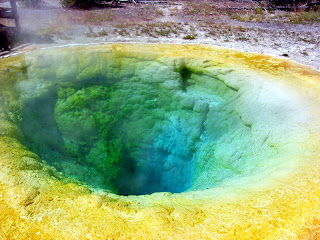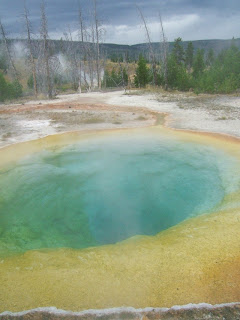
Idukki Wildlife Sanctuary is located at a distance of 40 kms from Thodupuzha in Kerala. This sanctuary sprawls over the Thodupuzha and Udumpanchola taluks of Idukki district spanning over 77sq. kms, at an altitude of 450 - 748m above sea level.
The beautiful Idukki reservoir formed by three dams-Cheruthoni, Idukki and Kulamavu - extending to 33 sq. km, adds to the beauty of the sanctuary. A luring lake, a majestic arch dam across two hills, the rich flora & fauna and wandering and playing herds of elephants and gaur are sights that charm you to this captivating canopy of tropical semi-evergreen and deciduous forests. The fauna population here includes Langur, Leopard and Wild Boar.
Sightseeing at Idukki -The Fauna : Among the mammals, Elephants, Bison, Sambhar, Deer, Wild Dogs, Jungle Cats, Tiger, Wild Boar etc reptiles such as Cobra, Viper, Krait and a large number of non- poisonous snakes can be seen.

The birds population include - Jungle Fowl, Myna, Laughing Thrush, Black Bulbul, Peafowl, Woodpecker, Kingfisher etc also inhabit the place in large numbers.
Idukki Arch Dam : Idukki arch dam is the world's second and Asia's first arch dam, constructed across the Kuravan and Kurathi hills. 550 feet high and 650 feet wide, the dam lies close to the Cheruthoni Barrage. To its west is the Kulamavu Dam. Idukki Wildlife Sanctuary is located closeby.
Best Season to visit : The best time to visit Idukki is between October and April.
Reaching Idukki -Air : The nearest airport is at Cochin 132 km away.
Rail : The nearest railway station is at Kottayam, 133 km away.
Road : Idukki can be reached by mortable roads from most parts of Kerala.
Elephants at Idukki Wildlife Sanctuary
Basic Guidelines -Please enter the Park only after taking the necessary permits and follow all the rules.
Drive slowly in the Park. In this way you can see, observe and enjoy the most, without disturbing the wildlife.
Respect the wild animals and maintain a safe distance from them. Remember, you are in their home and they get first priority.
Switch off your car stereo or transistor. The quieter you are, the more the chances of your seeing wildlife.
Wear dull-coloured clothes. Bright colours alarm most wild animals and they flee.
Don’t carry guns or other weapons. Feel free to shoot with a camera instead.
Do not smoke or light campfires in the forest. Accidental fires can destroy this wonderful jungle in no time.
Don’t get off your vehicle at any point in the Park except where it’s allowed. This is for your own safety and the safety of wildlife.
Help keep the park pollution-free. While inside the park, please put your entire non-biodegradable litter (tin cans, plastic, glass bottles, metal foils etc.) into the bag provided and dispose of it on your way out.
Keep to the specified roads and trails. Driving off track you may trample growing trees and cause disturbance to resting animals and their youngs.


















 The Morning Glory Pool is only 1.4 miles from the Old Faithful Visitors Center by way of a partial boardwalk partial paved path. Along the way you will pass many of Yellowstone's notable geysers like Grotto Geyser and Castle Geyser. Morning Glory Pool is a hot spring and was named in the 1880's for its sapphire color which was similar to the color of the morning glory flower. Since the time the pool was named, the pool has been polluted by visitors who littered rocks, coins, and other objects into the pool. Some seemed to think it was a natural version of a wishing well. Each of these objects have took part in blocking the path of the vent which gives the pool its heat. The lack of direct heat from the vent dropped its temperature from nearly 200 degrees Fahrenheit (100 Celsius) at the surface to a colder 140-120 degrees (65-50 Celsius). This drop changed kinds of bacteria living near the surface from Archaea which grows only in water 170 degrees Fahrenheit (75 Celsius) or more to others. The colder bacteria comes in many different colors like: Cyanobacteria (163 F or 73 C) yellow Fungi and Algae (140 F or 60 C) yellow/green Protozoa (133 F 66 C) Orange Mosses (122 F or 50 C) Brown.
The Morning Glory Pool is only 1.4 miles from the Old Faithful Visitors Center by way of a partial boardwalk partial paved path. Along the way you will pass many of Yellowstone's notable geysers like Grotto Geyser and Castle Geyser. Morning Glory Pool is a hot spring and was named in the 1880's for its sapphire color which was similar to the color of the morning glory flower. Since the time the pool was named, the pool has been polluted by visitors who littered rocks, coins, and other objects into the pool. Some seemed to think it was a natural version of a wishing well. Each of these objects have took part in blocking the path of the vent which gives the pool its heat. The lack of direct heat from the vent dropped its temperature from nearly 200 degrees Fahrenheit (100 Celsius) at the surface to a colder 140-120 degrees (65-50 Celsius). This drop changed kinds of bacteria living near the surface from Archaea which grows only in water 170 degrees Fahrenheit (75 Celsius) or more to others. The colder bacteria comes in many different colors like: Cyanobacteria (163 F or 73 C) yellow Fungi and Algae (140 F or 60 C) yellow/green Protozoa (133 F 66 C) Orange Mosses (122 F or 50 C) Brown.

